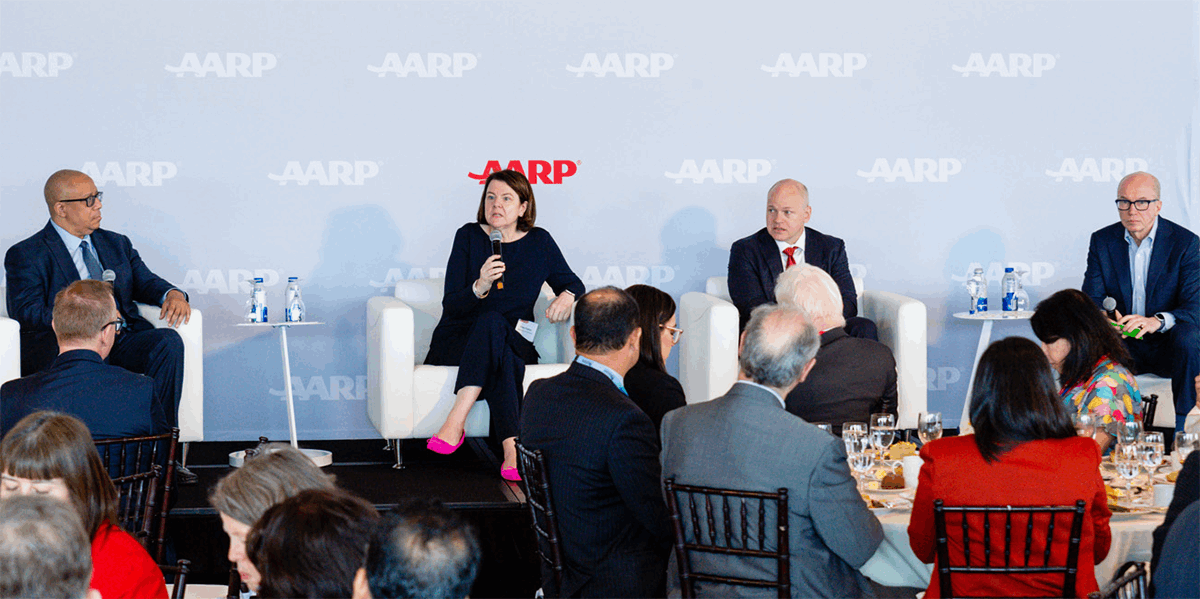 On May 17, 2024, AARP and the United Nations (UN) hosted the 17th Annual AARP-United Nations Briefing Series, Business and Social Development Perspectives on Aging Populations in Low- and Middle-Income Countries, which focused on how the global megatrend of population aging extends to all countries—with a particular focus on low- and middle-income countries.
On May 17, 2024, AARP and the United Nations (UN) hosted the 17th Annual AARP-United Nations Briefing Series, Business and Social Development Perspectives on Aging Populations in Low- and Middle-Income Countries, which focused on how the global megatrend of population aging extends to all countries—with a particular focus on low- and middle-income countries.
The message: older populations are burgeoning at a rate unique in human history. This growth creates opportunities for both governments and the private sector to embrace this demographic group and harness its economic power.
Throughout the event, participants heard from experts and thought leaders on the benefits of planning for demographic change in emerging markets with dynamic policy, caregiving, and workforce agendas.
In his opening remarks, Peter Rundlet, Vice President, AARP International, relayed that many low- and middle-income countries are “young,” but that demographic change is quickly coming to all regions.
A Call-to-Action
Li Junhua, Under-Secretary-General for Economic and Social Affairs, United Nations, emphasized that addressing the issues of aging in low- and middle-income countries hinges on ensuring that they see the opportunities of aging so they can help address the challenges.
“By 2050, the global population of older persons is projected to more than double,” he said. “We must acknowledge this reality and reaffirm our commitment to ensure their dignity.” He later added that “collaboration with private sector can lead to tailored solutions that meet the needs of the aging populations.”
Countries Plan For the Future
The next speaker, Debra Whitman, Executive Vice President and Chief Public Policy Officer, AARP, stressed that the issues surrounding demographic change in low- to middle-income countries have not gotten the attention they require. She shared her personal experience of traveling to Kenya and Tanzania with AARP CEO Jo Ann Jenkins earlier this year, where they met with policymakers, government officials, and older persons’ organizations – and witnessed firsthand the need to futureproof infrastructure investments to meet the needs of older individuals.
“We must start planning because we know demographic change means major adjustments,” Whitman emphasized. “It is possible to build an age-inclusive society where everyone has the right to live with dignity and purpose.”
Three Waves of Change Driving Global Economics
In his keynote remarks, Alan Murray, Board Member, AARP, and Former CEO, Fortune Media, Inc., noted that there are currently “three great waves of change driving business and economics around the world.” The first is the technology and artificial intelligence revolution. The second is the great energy transition from fossil fuels to a non-carbon-emitting economy for the climate. The third is “the demographic changes that are being driven by increases in longevity.” The last of these waves of change, he underscored, does not get the attention it deserves, despite the inexorable effect it will have on businesses and societies.
Unlocking the Opportunity of an Aging Population
Murray then moderated a lively panel discussion with panelists Rodney Bolden, Executive Director, Head of Industry Engagement and Learning, Morgan Stanley, Ellen Feehan, Partner and Co-leader of McKinsey Health Institute on Healthy Longevity, McKinsey & Company, and Rich Nuzum, Executive Director and Global Chief Investment Strategist, Mercer.
Each panelist made a compelling case about why the growing number of older persons in low- and middle-income countries are relevant to business and social development – and policy-makers and business leaders alike ignore this at their peril.
In terms of keeping healthy, Feehan mentioned the potential to add 45 billion healthy life years by making practical changes that we already know how to do, outlined in a wide-reaching report by her Institute at McKinsey.
Nuzum and Bolden addressed ways to unlock the potential of a multigenerational workforce, redesigning society in the process. This is possible through eliminating ageism and other forms of discrimination, and it bolsters economies by engaging older workers. It also encourages purpose and social connection. They noted that it is a big shift, but a necessary one. Nuzum, who oversees Mercer’s Global Pension Index, said: “The best time to plant a tree is 20 years ago; the second-best time is today.”
Closing the event, Whitman shared a quote she learned at an Active Ageing Club of older persons in Tanzania. They chanted: “We were here. We are here, and we will be here.” This is a fact that grows in import along with growing populations of older people. With the right policies, older people in low-and middle-income countries will be a crucial component of business success and social development.